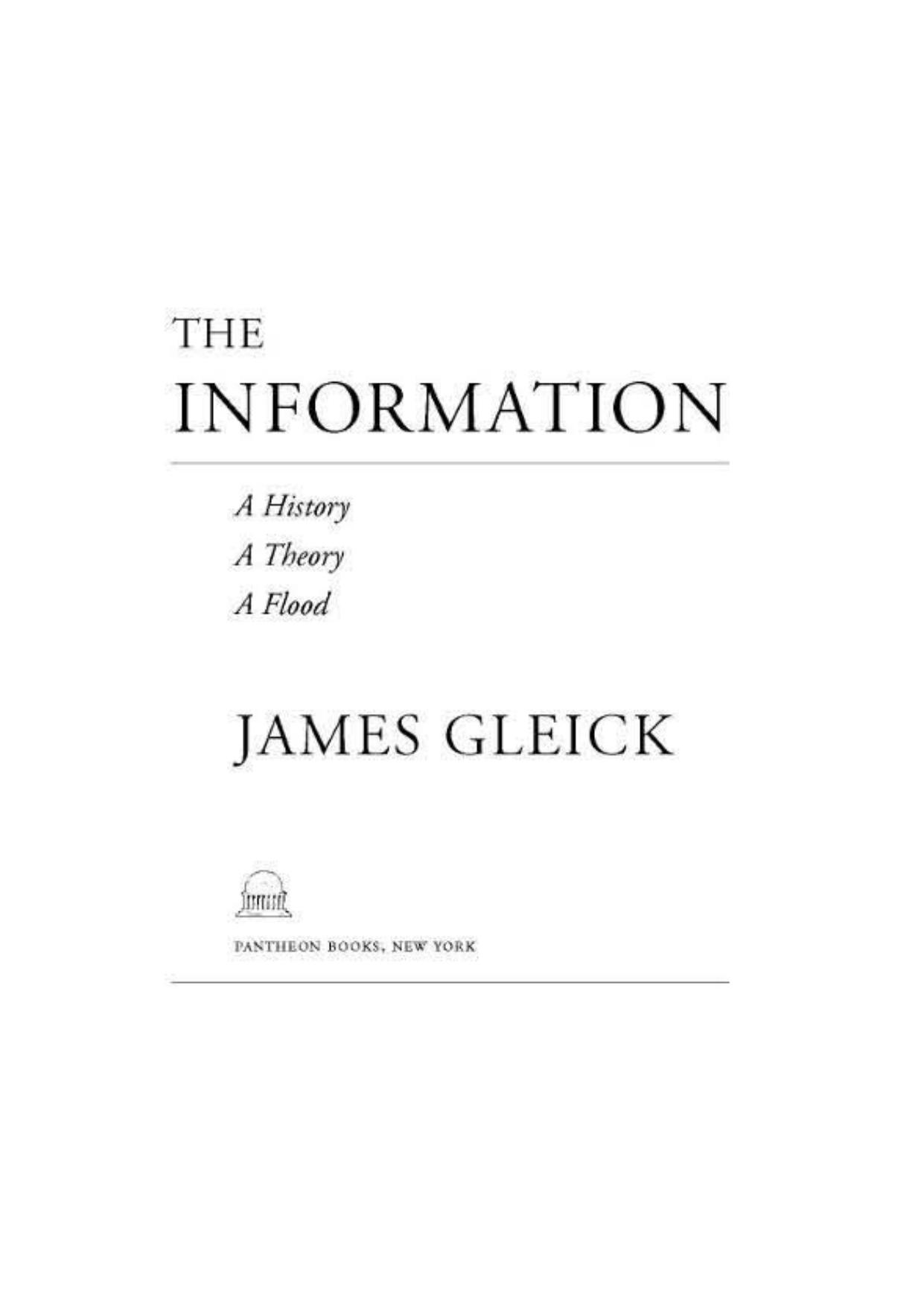The Information: A History, a Theory, a Flood by James Gleick

Author:James Gleick
Language: eng
Format: mobi, epub, pdf
Tags: Language Arts & Disciplines, Non-fiction, Information Theory, Library & Information Science, Reference, Technology & Engineering, Social Aspects, Science, Computers, General, Information Science, Information Society, Information Science - History, Information Technology, History
ISBN: 9780007225736
Publisher: Fourth Estate
Published: 2011-03-01T01:54:18+00:00
Put another way, H is a measure of surprise. Put yet another way, H is the average number of yes-no questions needed to guess the unknown message. Shannon had it right—at least, his approach proved fertile for mathematicians and physicists a generation later—but the confusion lingered for some years. Order and disorder still needed some sorting.
We all behave like Maxwell’s demon. Organisms organize. In everyday experience lies the reason sober physicists across two centuries kept this cartoon fantasy alive. We sort the mail, build sand castles, solve jigsaw puzzles, separate wheat from chaff, rearrange chess pieces, collect stamps, alphabetize books, create symmetry, compose sonnets and sonatas, and put our rooms in order, and to do all this requires no great energy, as long as we can apply intelligence. We propagate structure (not just we humans but we who are alive). We disturb the tendency toward equilibrium. It would be absurd to attempt a thermodynamic accounting for such processes, but it is not absurd to say we are reducing entropy, piece by piece. Bit by bit. The original demon, discerning one molecule at a time, distinguishing fast from slow, and operating his little gateway, is sometimes described as “superintelligent,” but compared to a real organism it is an idiot savant. Not only do living things lessen the disorder in their environments; they are in themselves, their skeletons and their flesh, vesicles and membranes, shells and carapaces, leaves and blossoms, circulatory systems and metabolic pathways—miracles of pattern and structure. It sometimes seems as if curbing entropy is our quixotic purpose in this universe.
In 1943 Erwin Schrödinger, the chain-smoking, bow-tied pioneer of quantum physics, asked to deliver the Statutory Public Lectures at Trinity College, Dublin, decided the time had come to answer one of the greatest of unanswerable questions: What is life? The equation bearing his name was the essential formulation of quantum mechanics. In looking beyond his field, as middle-aged Nobel laureates so often do, Schrödinger traded rigor for speculation and began by apologizing “that some of us should venture to embark on a synthesis of facts and theories, albeit with second-hand and incomplete knowledge of some of them—and at the risk of making fools of ourselves.”♦ Nonetheless, the little book he made from these lectures became influential. Without discovering or even stating anything new, it laid a foundation for a nascent science, as yet unnamed, combining genetics and biochemistry. “Schrödinger’s book became a kind of Uncle Tom’s Cabin of the revolution in biology that, when the dust had cleared, left molecular biology as its legacy,”♦ one of the discipline’s founders wrote later. Biologists had not read anything like it before, and physicists took it as a signal that the next great problems might lie in biology.
Schrödinger began with what he called the enigma of biological stability. In notable contrast to a box of gas, with its vagaries of probability and fluctuation, and in seeming disregard of Schrödinger’s own wave mechanics, where uncertainty is the rule, the structures of a living creature exhibit remarkable permanence.
Download
The Information: A History, a Theory, a Flood by James Gleick.epub
The Information: A History, a Theory, a Flood by James Gleick.pdf
This site does not store any files on its server. We only index and link to content provided by other sites. Please contact the content providers to delete copyright contents if any and email us, we'll remove relevant links or contents immediately.
Algorithms of the Intelligent Web by Haralambos Marmanis;Dmitry Babenko(9831)
Test-Driven Development with Java by Alan Mellor(7637)
Data Augmentation with Python by Duc Haba(7524)
Principles of Data Fabric by Sonia Mezzetta(7295)
Learn Blender Simulations the Right Way by Stephen Pearson(7216)
Microservices with Spring Boot 3 and Spring Cloud by Magnus Larsson(7048)
RPA Solution Architect's Handbook by Sachin Sahgal(6447)
Jquery UI in Action : Master the concepts Of Jquery UI: A Step By Step Approach by ANMOL GOYAL(6446)
The Infinite Retina by Robert Scoble Irena Cronin(6150)
Hadoop in Practice by Alex Holmes(6135)
Big Data Analysis with Python by Ivan Marin(5880)
Life 3.0: Being Human in the Age of Artificial Intelligence by Tegmark Max(5474)
Pretrain Vision and Large Language Models in Python by Emily Webber(4831)
Infrastructure as Code for Beginners by Russ McKendrick(4612)
WordPress Plugin Development Cookbook by Yannick Lefebvre(4331)
Functional Programming in JavaScript by Mantyla Dan(4215)
The Age of Surveillance Capitalism by Shoshana Zuboff(4207)
Embracing Microservices Design by Ovais Mehboob Ahmed Khan Nabil Siddiqui and Timothy Oleson(4103)
Applied Machine Learning for Healthcare and Life Sciences Using AWS by Ujjwal Ratan(4082)
